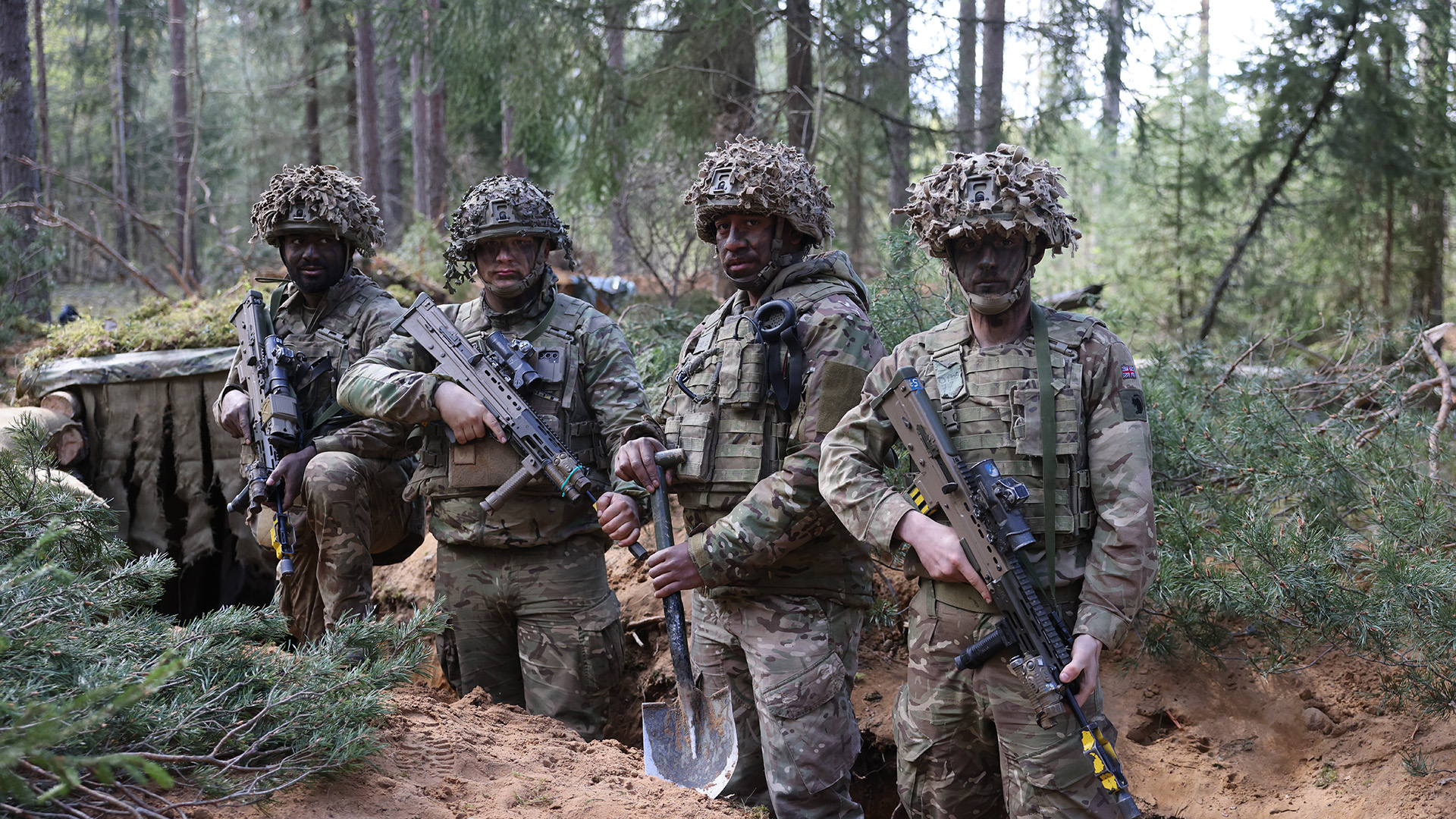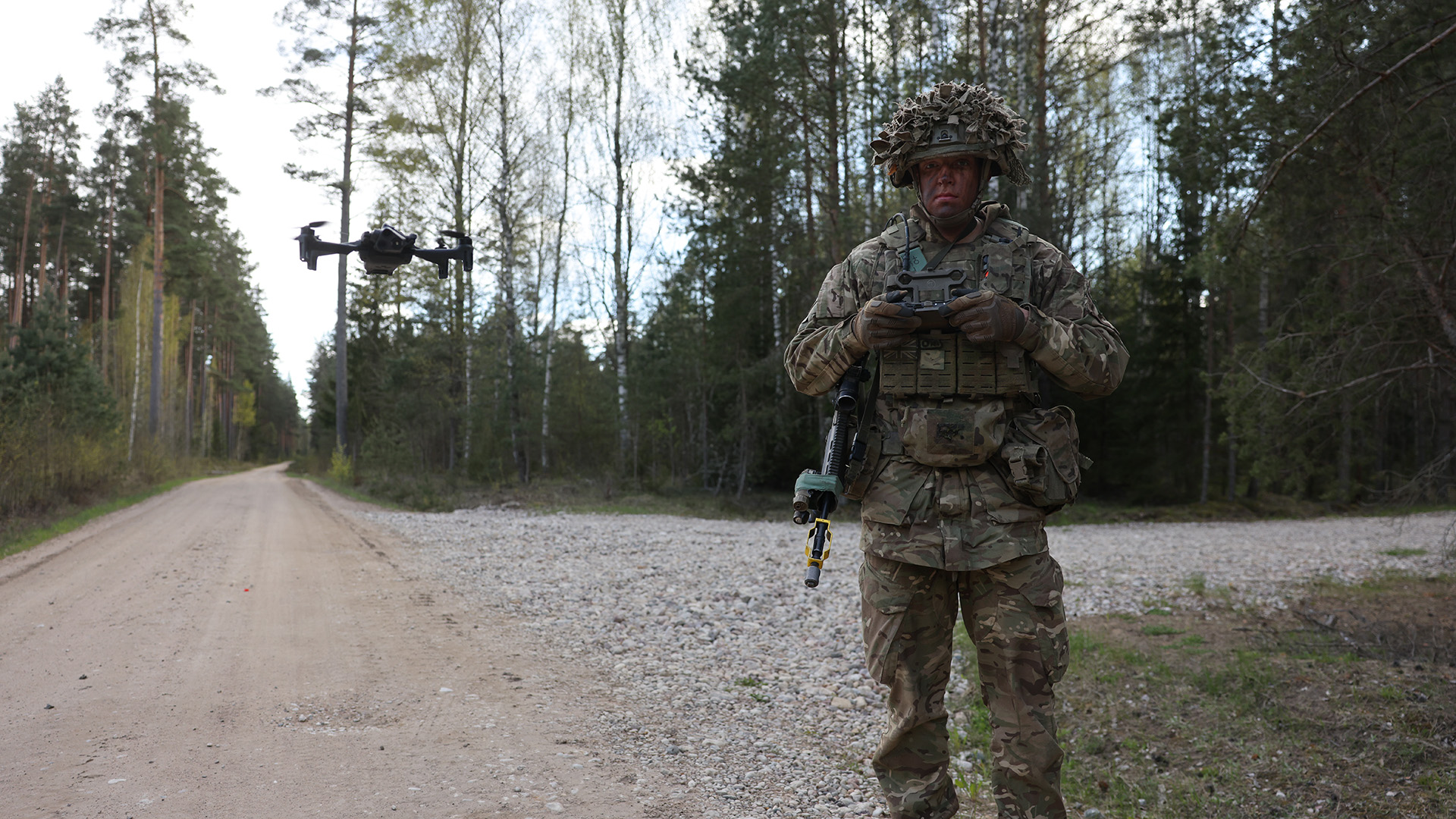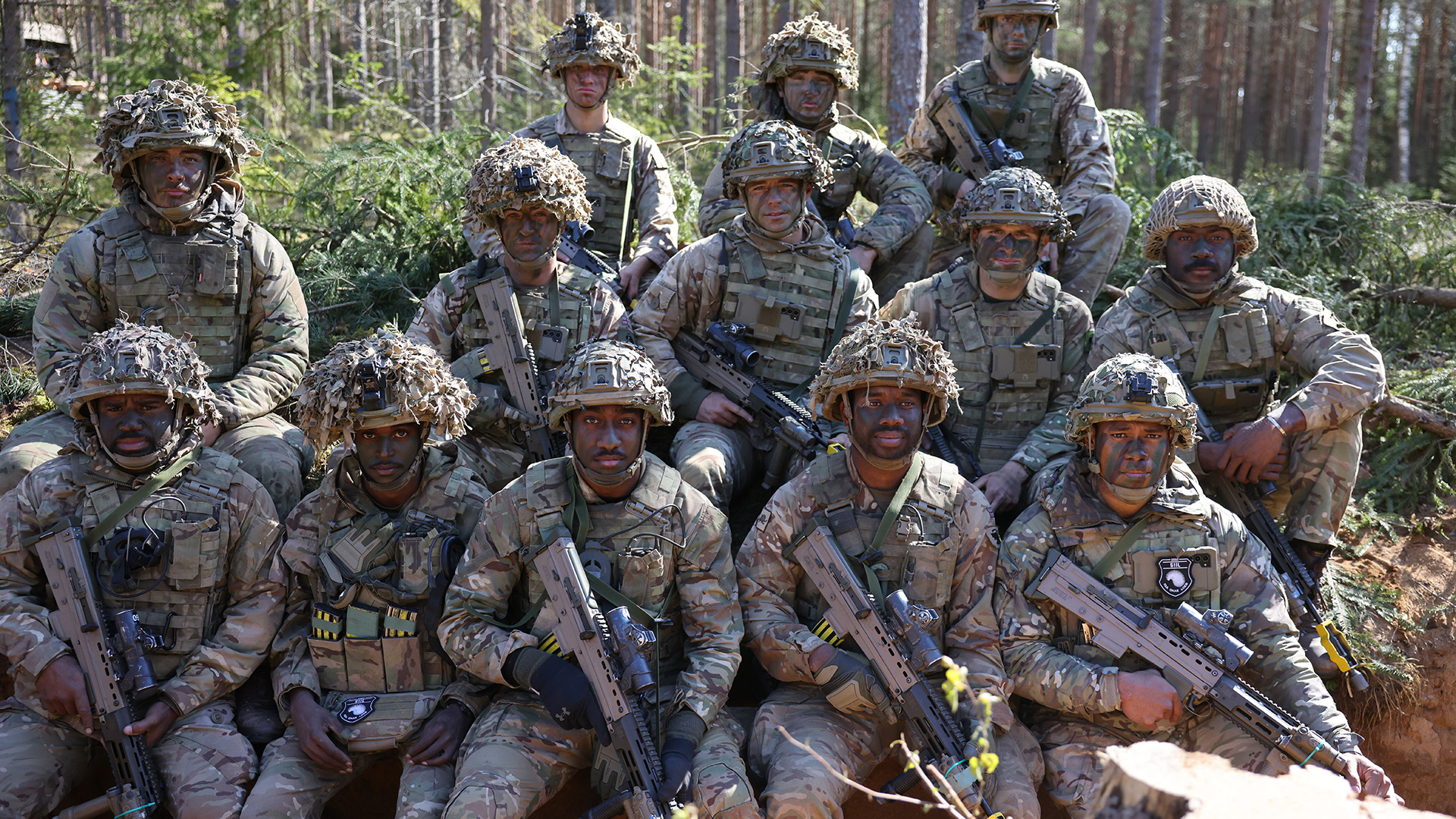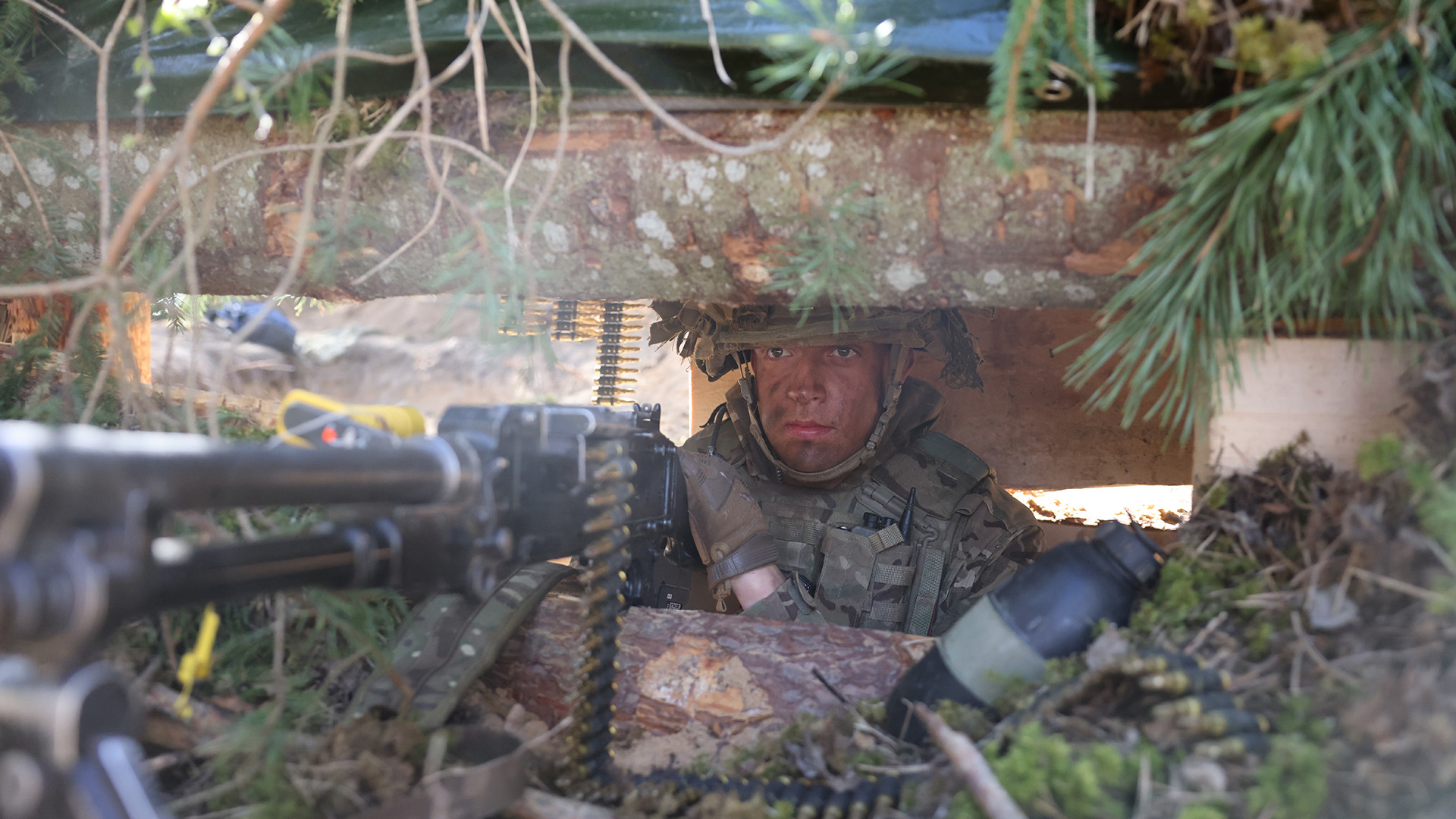On the frontline: British troops dig in just 35 miles from Russia in show of Nato strength
Just 35 miles from the Russian border, British troops are digging trenches, manning defensive positions and preparing for war.
In southern Estonia's forests, BFBS Forces News joined soldiers from 1st Battalion, The Duke of Lancaster's Regiment – the Kingos – as they took part in a major Nato exercise, testing the alliance's ability to reinforce and defend its eastern flank in the face of a potential invasion.
It is all part of Exercise Hedgehog, one of the largest military drills ever conducted in Estonia.
The scenario? A hostile state crosses the border, triggering a swift and powerful Nato response.
We embedded with British forces for a key stage of the deployment, and gained rare access to a simulated conflict scenario unfolding just a short drive from Russian soil.
"Ex Hedgehog is showcasing the Forward Land Forces Brigade, currently 4 Light Brigade, ability to rapidly deploy and then operate with the 1st Estonian Division in a relatively challenging environment," said Lieutenant Colonel Bob Carman, Commanding Officer of 1 Lancs.
"It's about demonstrating Nato's readiness to respond to a threat to its member states."

Testing Nato's response to invasion
During our time embedded with 1 Lancs, a striking moment underscored the realism of the exercise.
A lone figure appeared from the dense tree line, hands raised in surrender. The soldiers moved swiftly, taking him into custody and processing him as a prisoner of war in accordance with the Geneva Convention.
Although staged, the scenario was far from theatrical. An exercise controller explained that encounters like this happen regularly on the battlefields of Ukraine – surrendering Russian soldiers approaching trenches, hoping to hand themselves over.
Exercise Hedgehog has seen more than 2,500 additional troops from the UK and France joining Nato's permanent contingent in Estonia – part of Operation Cabrit – in what has been a comprehensive readiness test.
They were joined in theatre by 10,000 Estonian troops, mobilised as part of the country's conscription programme, which sees more than 4,000 civilians called up to serve annually, aged 18 and over.
The process of getting UK personnel and equipment to the frontline was a challenge. Some of 1 Lancs' personnel boarded the Eurostar at St Pancras, making their way to the east by rail – rehearsing the kind of rapid reinforcement Nato would need in a genuine emergency.
An evolving battlefield
We watched as 1 Lancs dug in – not metaphorically, but literally. In a remote area of forest near the town of Võru, they constructed trench networks, tank ditches and firing positions that simply could not be replicated in the UK.
And what is more, the defence infrastructure built for this exercise by the infanteers from Preston in Lancashire will remain in place and can be used in the event of a real invasion by Russia.
Kingsman Liam Barnes took us inside the underground sleeping quarters he and his mates are using while dug in and on high alert.
"So, we got here and there was just a hole in the ground," Kgsm Barnes said. "We started digging, and we got this done by day two. We fold up our doss-bags [Army sleeping bags] so there's more room during the day.
"It's quite spacious, really. We were digging for two days. It’s quite homely, and in fact, this is luxury for an infantryman."
Ex Hedgehog is not just about muscle and manpower – it is about modern warfare. The British Army has been rapidly updating its battlefield tactics in light of the lessons from Ukraine.
Drones now play a central role. BFBS Forces News met Lance Corporal Trent Isles, flying a lightweight Parrot drone that provides critical real-time aerial footage to commanders.
In another trench, Lance Corporal Dylan Ashurst operated a different system – a kamikaze attack drone, common in Ukraine.
"It's built for purpose. It flies, hits a target, and that's it. Destroyed. That's what a one-way attack drone does," LCpl Isles said.
Asked if he ever thought this was the way combat would go, LCpl Ashurst, who has served for 10 years, said it has been a bit of a surprise to see how battlefield doctrine has evolved.
"It's the way the world's moving now," he said. "We've seen the current conflict in Ukraine and other parts of the world that this is the sort of avenue conflict's going now… we're behind the curve, so to speak."
Drones like these give commanders a vital edge in detecting enemy positions, tracking movement and attacking the enemy when necessary.

Why Estonia matters
Estonia's geography has long made it vulnerable to invasion. It shares a nearly 300km border with Russia and lies just across the Gulf of Finland from St Petersburg.
Its flat terrain, sparse population and limited natural barriers make it particularly susceptible to rapid armoured advances.
That vulnerability is precisely why Nato maintains a persistent presence here. Under Operation Cabrit, British troops rotate through Estonia on six-month deployments.
They work alongside Estonian Defence Forces and other Nato allies to create a powerful deterrent, one that says any incursion will be met with immediate force.
Since Russia's full-scale invasion of Ukraine in 2022, Estonia's strategic significance has only grown. As part of Nato's Forward Land Force, the country is no longer seen as a peripheral member – it is now the frontline.

Building more than trenches
For the Kingos of 1 Lancs, this deployment is part exercise, part proving ground.
After passing their validation on Exercise Wessex Storm earlier this year, the battalion was declared combat-ready.
Now, in Estonia's forests, they have demonstrated their ability to deploy fast, build defences and operate under pressure – not just as individuals, but as a tightly bonded team.
"It's easy from my perspective, I've got a fantastic team," Lt Col Carman said.
"The soldiers work incredibly hard; they've really appreciated being able to come here and be empowered to adapt to the environment. The defensive build has been different to what we usually do in the UK.
"Importantly, they're learning a lot, and it gives you a tremendous amount of pride to see them learning and actually enjoying themselves too.
"It would be great to see the soldiers finishing this exercise having won, but equally, having had the opportunity to experience Estonian culture as well.
"That will help them understand the reason to be here."
From July, 1 Lancs will form part of Nato's high-readiness reserve force. Alongside the rest of 4 Brigade – known as the Black Rats – they will be on standby for rapid deployment to Nato's eastern flank, for real, for the next two years.

A message of deterrence
What BFBS Forces News witnessed in Estonia was not just military posturing. It was a visible, tangible demonstration of Nato's evolving ability to defend its territory.
From trench-building to drone warfare, the exercise proved that the alliance's forces are not only ready for the demands of modern combat – they are actively preparing for it.
For 1 Lancs, it was a chance to sharpen their skills, test equipment, and strengthen the bonds that hold a fighting unit together. For Nato, it sent a clear signal: the eastern flank is fortified, and any threat will be met with speed, strength and unity.
In a region where peace cannot be taken for granted, this kind of preparation is more than reassurance. It is the foundation of deterrence – and the most powerful way to prevent war.









